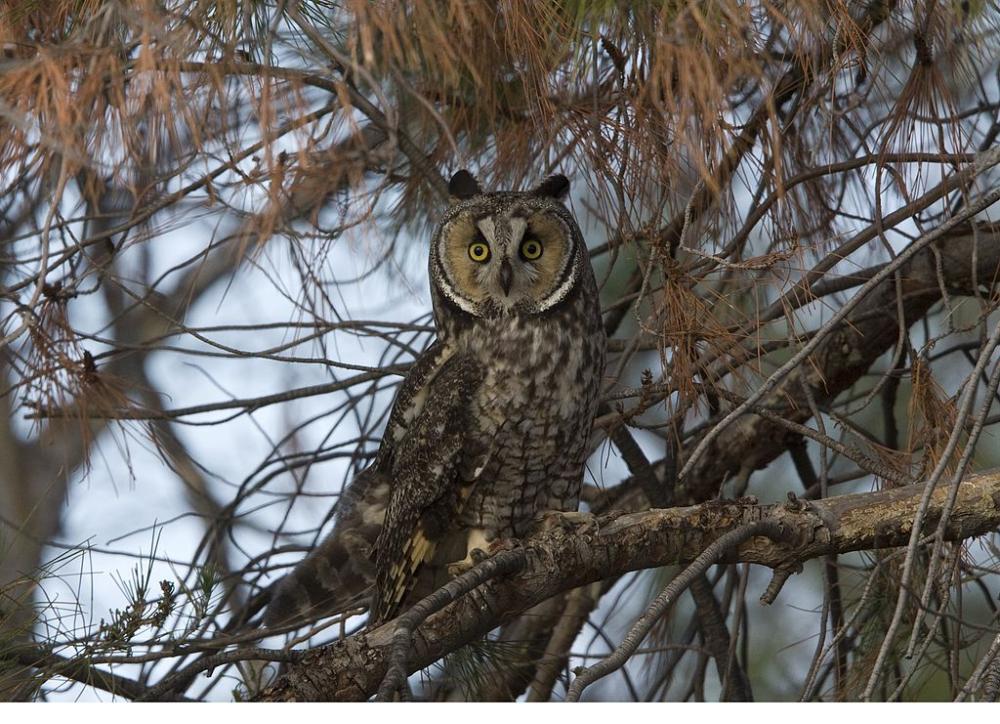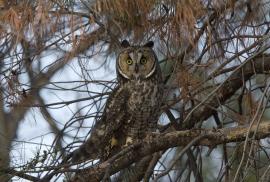Guide to Boreal Birds
Overview
Although these woodland owls are gregarious in winter, they are so quiet during the day that up to a dozen may inhabit a dense evergreen grove without being detected. They have a tendency to roost near the trunk of a tree, and since they elongate themselves by compressing their feathers, they resemble part of the trunk itself. Only by peering intently upward can one detect the round face and telltale long ear tufts. A good way to locate an owl roost is to search in pine woods for groups of pellets on the ground. These regurgitated bundles of undigested fur and bones provide an excellent indication of the bird's food habits.
Description
15" (38 cm). W. 3' 3" (1 m). A nearly crow-sized owl with long ear tufts set close together. Heavily mottled brown; chestnut facial disks.
Voice
Soft low hoots; also whistles, whines, shrieks, and cat-like meows. Seldom heard except during breeding time.
Nesting
4 or 5 white eggs in a deserted crow, hawk, or squirrel nest.
Habitat
Deciduous and coniferous forests.
Range/Migration
Breeds from central British Columbia, southern Mackenzie, and Quebec south to California, Arkansas, and Virginia. Winters in southern part of breeding range and in southern tier of states. Also in Eurasia.



